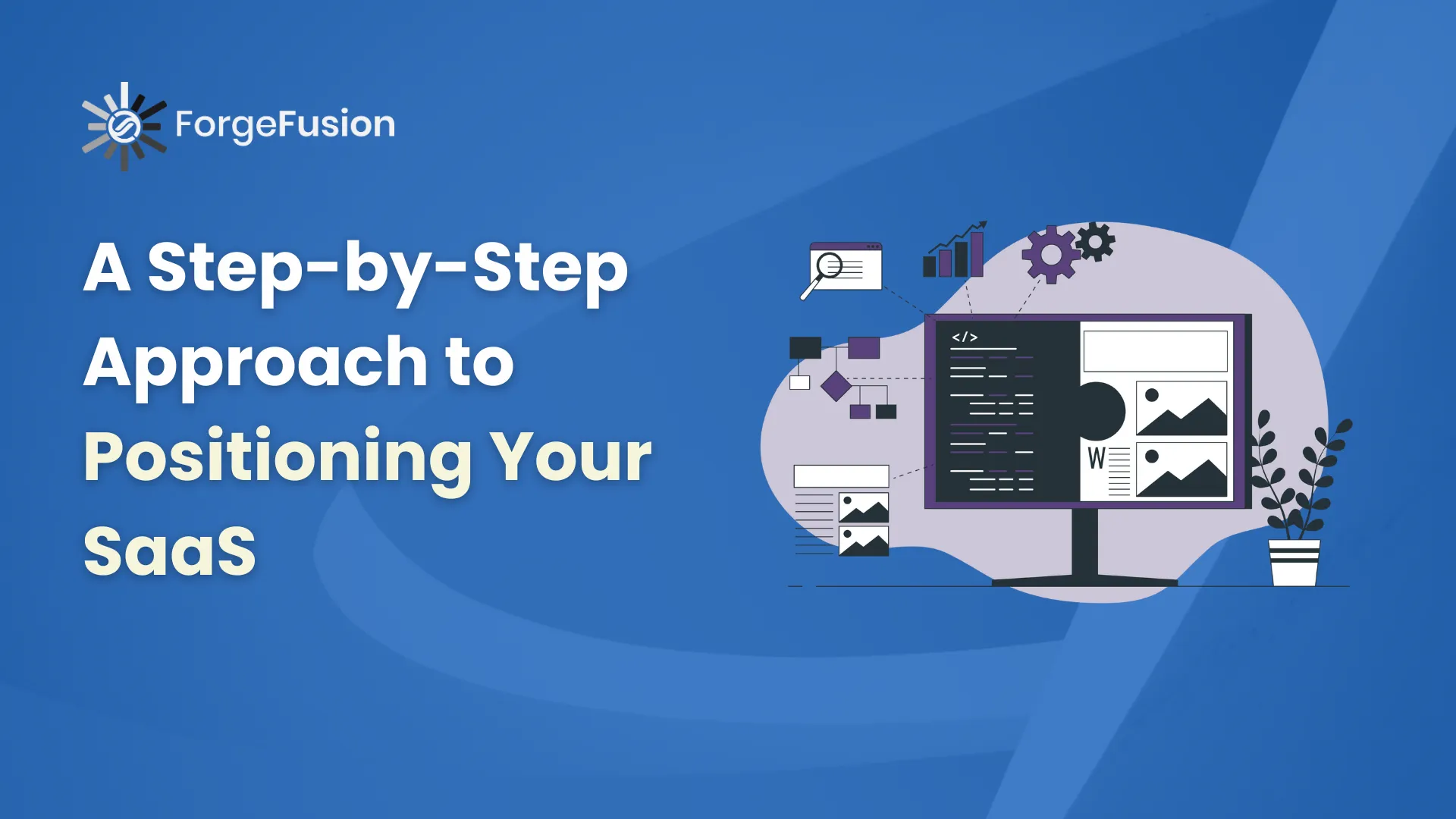Do you know how Slack positions itself in the crowded world of apps? It’s pretty cool.
They don’t just call themselves a messaging app. Instead, they’re all about making work life simpler, more pleasant, and more productive. Think of Slack as your go-to place for team chats, where everything’s organized and easy to find. It’s like having your team’s conversations, files, and tools in one handy spot.
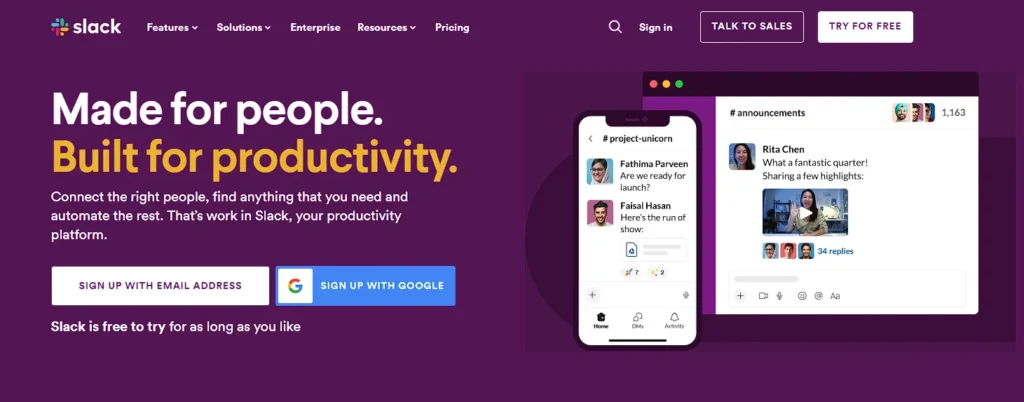
This approach really sets them apart in the SaaS world, making them a top choice for businesses that want to keep things smooth and straightforward.
Here comes SaaS positioning that positions Slack differently from its competitors.
So this was all about for Slack, now let’s see how you can position your brand in the best possible way.
Let’s dive…
Table of Contents
What is SaaS positioning
SaaS positioning is all about how a brand sets itself apart in the market. It’s like giving the product its own unique identity. This involves figuring out who the ideal customers are, what makes the product special, and how it solves problems better than others.
In simple terms, it’s about answering questions like: Who needs this product? Why should they choose it over others? What’s the big benefit they get from using it?
Good positioning makes a SaaS product stand out, showing customers exactly why it’s the right choice for them. It’s not just about features; it’s about the value and experience the software brings to the table.
As Jeff Bezos said, “Your brand is what other people say about you when you’re not in the room.” likewise, you must focus on what the masses actually need and get them before anyone else to steer your way up ahead of all the competition around.
Advantages of SaaS positioning
Advantages of SaaS positioning are crucial for standing out in a competitive market. Here are the key benefits of SaaS positioning:
Identifying your target market
It’s like having a map for your business journey. You know exactly who needs your software. Think Salesforce – they nailed it by focusing on businesses needing CRM solutions.
Standing out from competitors
This is where you show what’s special about your product. Slack did this brilliantly by being more than a chat app – a complete team collaboration tool.
Building customer loyalty
When you position your product right, customers stick around. Take HubSpot, for example. They became the go-to for inbound marketing, creating a loyal fan base. But if you keep changing your story, your customers might get confused and walk away.
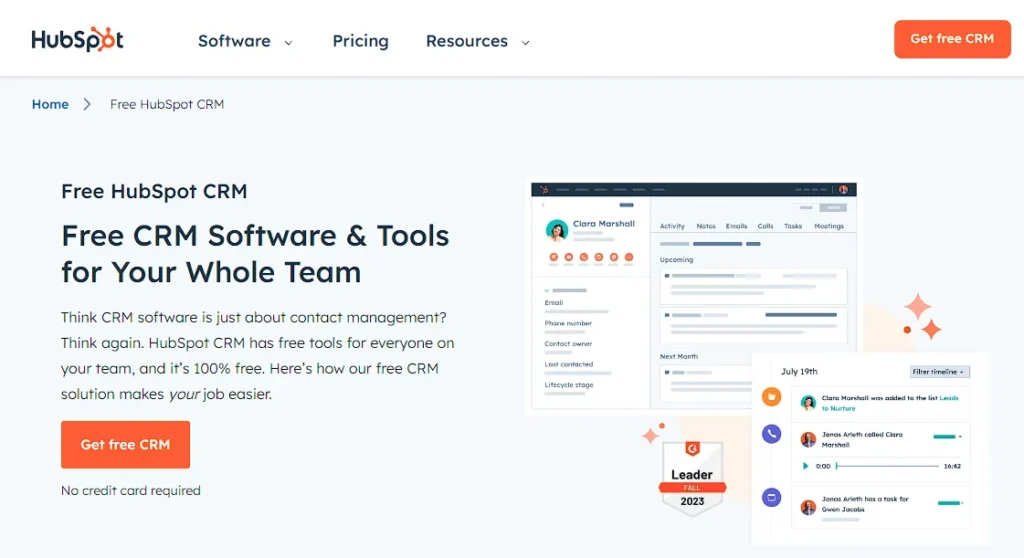
Sharpening your marketing and sales
With a clear position, your marketing hits the right notes. Zoom’s a great example – during the pandemic, they positioned themselves as the easy, reliable choice for remote communication.
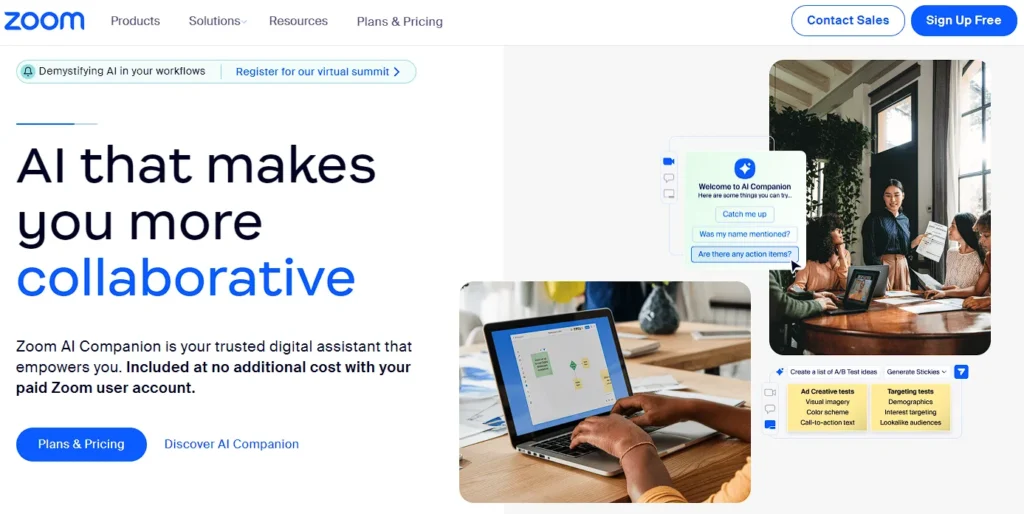
Raising the product value
With organized SaaS positioning, you can elevate your product’s value in the eyes of customers by demonstrating how your product can solve their problems efficiently. This will raise the value of the product and, in a bigger picture, increase your profit margins.
Different types of SaaS positioning
| Type of Positioning | Description | Examples |
| Feature-Based | Focuses on unique features or technical superiority. | Asana: Highlighting its work management tools that help teams organize and track their work efficiently. |
| Problem-Solution | Centers on a specific problem and how the product solves it. | Freshdesk: Positioning itself as a solution for complex customer support challenges. |
| Customer Segment | Targets a specific type of customer or industry. | Shopify: Tailored for e-commerce businesses, offering tools specifically designed for online stores. |
| Price-Based | Competes on pricing strategy, either as a cost leader or a premium option. | Zoom: Offering free basic plans with affordable upgrades, appealing to budget-conscious users. |
| Use Case | Focused on specific use cases or scenarios where the product excels. | Slack: Positioned for team collaboration and communication, emphasizing its effectiveness in these areas. |
| Quality or Performance | Emphasizes superior quality or performance. | Salesforce: Known for its high-quality CRM solutions and robust performance for enterprise clients. |
| Innovation | Positions as the most innovative or cutting-edge option. | GitHub: Seen as an innovative platform for code hosting and collaboration among developers. |
| Customer Experience | Highlighting exceptional customer service or user experience. | Mailchimp: Known for its user-friendly interface and excellent customer support. |
10 easy steps to position your SaaS brand
Step 1: Understand your product deeply
Dive into your product’s features, benefits, and potential drawbacks.
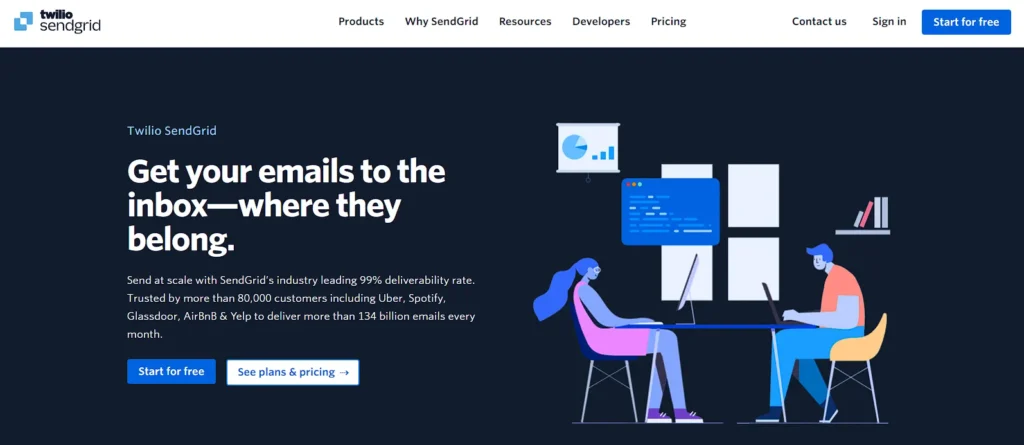
For example, If your SaaS is an email marketing tool, understand how it’s different from existing tools like Mailchimp or SendGrid. Does it have better automation, more templates, or superior analytics?
Step 2: Identify your ideal customer
Create customer personas. Who benefits most from your product?
For example, your ideal customers might be small business owners who are not tech-savvy and need simple, effective email marketing solutions.
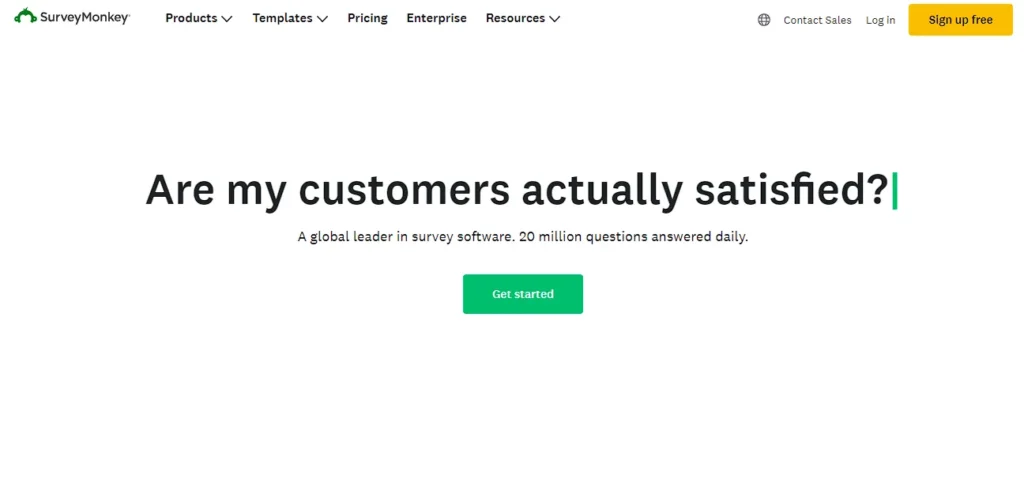
You can use survey tools like Google Forms, Typeform, and SurveyMonkey to gather data about your target audience, their needs, and pain points.
Step 3: Analyze your competitors
Research your direct and indirect competitors. What are they offering?
Look at how Mailchimp positions itself as an all-in-one marketing platform. How is your product different or better?
Step 4: Find your Unique Selling Proposition (USP)
Determine what makes your product stand out. Is it pricing, features, user experience?
For example, maybe your email tool offers unparalleled ease of use or innovative features like AI-driven content suggestions.
Step 5: Define your positioning statement
Craft a clear, concise statement that encapsulates your product’s unique place in the market.
For example: “The simplest email marketing tool for small businesses, combining ease of use with powerful automation features.”
Step 6: Align your messaging
Ensure all your marketing materials reflect your positioning.
Your website, ads, and social media should all emphasize simplicity and effectiveness for small businesses.
Step 7: Test and get feedback
Share your positioning with a small audience and get feedback.
Run a beta test with a few small businesses, gather their feedback on your positioning, and adjust if necessary.
Step 8: Launch and monitor
Launch your product with your positioning in mind and monitor the market response.
After launching, keep an eye on customer reviews and feedback. Are they resonating with your positioning as the simplest email tool for small businesses?
Step 9: Iterate and evolve
Be ready to tweak your positioning based on market feedback and changes.
If you find that customers value a specific feature like your AI-driven content suggestions, consider tweaking your positioning to highlight this feature more.
Step 10: Build your brand around your positioning
Let your positioning guide your brand’s voice, tone, and image.
If simplicity is your key positioning, your brand should reflect this in a clean, straightforward design and easy-to-understand language.
The Black Swan strategy for SaaS brand positioning
The term “Black Swan” comes from a book by Nassim Nicholas Taleb, where it describes rare, unpredictable events that have a huge impact.

In the world of SaaS brand positioning, think of a Black Swan strategy as being ready for those big surprises that nobody sees coming. It’s like playing chess and having a move in mind for a scenario that’s unlikely but could change the game if it happens.
Here’s how you can apply this to your SaaS brand
Be ready for surprises
Imagine something totally unexpected shakes up your market. You’ve got a plan for that. It’s not just about following the usual trends but being prepared to switch gears fast.
Quick to adapt
Say something big changes overnight, like how the pandemic did for remote work tools. If you’re quick to adapt your positioning, you can stand out. It’s about being agile and flexible.
Seize opportunities
When unusual opportunities pop up, you’re ready to jump on them. For example, if a new technology emerges, you might quickly integrate it into your service and adjust your positioning to highlight this new feature.
Build a strong base
You make your brand tough enough to handle shocks. This means not relying too much on one type of customer or one pricing strategy. You’re ready for anything.
Keep innovating
You’re always thinking ahead and trying new things. This way, when the unexpected happens, you’re more likely to see an opportunity where others see a problem.
April Dunford model for SaaS positioning

April Dunford, a renowned positioning expert, has developed a comprehensive model that can take your positioning game to a whole new level.
By considering each of these factors, you can create a compelling positioning strategy that resonates with your target audience and differentiates your product from the competition.
So, take the time to understand your market and leverage these insights to create a compelling positioning strategy that drives your SaaS product’s growth. Here are the 5 main points from the model:
Understanding the customers
This involves identifying who the best customers for the product are and understanding their needs and pain points. It’s about figuring out who loves your product and why.
Identifying the competitive alternatives
This step is about understanding what customers would do if your product didn’t exist. It’s not just about direct competitors but also indirect solutions that customers might consider.
Determining the unique attributes
Here, you focus on what’s unique about your product. What features or capabilities does your product have that the competitive alternatives lack?
Mapping attributes to value themes
This step is about connecting the dots between your product’s unique attributes and the reasons why customers care about those attributes. It’s about the value that these attributes bring to the customer.
Identifying the market category
This involves positioning your product within an existing market category, which helps customers understand what your product is and why they should care. It’s about finding the right context for your product.
Crafting a positioning statement
This is where you bring it all together into a clear, concise positioning statement that communicates the unique value of your product in the market.
Testing with customers
Finally, it’s about validating this positioning with real customers to ensure it resonates and makes sense.
Books to help you master the positioning game
Obviously Awesome! (April Dunford)
In this book, the SaaS Positioning Guru herself lets you know the secrets of consumer minds and provides deeper insights into the topic with many golden nuggets and many chapters that just literally got saved from being claimed as a piece of forbidden knowledge.
Crossing the Chasm (Geoffrey A. Moore)
This text highlights the value of a classic book that explores marketing strategies, including positioning. Although not exclusively about SaaS, it can be particularly useful for SaaS businesses seeking to scale their operations. The book provides insights and guidance on how to market your products or services and achieve long-term success effectively.
Positioning: The Battle for Your Mind (Al Ries and Jack Trout)
This book is a well-known marketing resource that teaches important ideas about “positioning.” These ideas can be helpful for businesses that provide software services and are competing in crowded markets.
By reading this book, you can learn how to understand your target audience better and give them what they need to be happy. It also explains how to use persuasive tactics to influence the audience’s behaviour effectively.
FAQs
-
Why is brand positioning important for SaaS companies?
It helps to differentiate your product in a crowded market and attract the right customers.
-
How do I determine my SaaS product’s unique selling proposition (USP)?
Identify the unique benefits and features of your product that directly address customer pain points.
-
What role does market research play in SaaS brand positioning?
Market research helps in understanding customer needs, market trends, and competitive positioning, crucial for effective positioning.
-
What’s the difference between brand positioning and marketing for SaaS?
Brand positioning is about defining your product’s place in the market, while marketing is how you communicate that position to customers.
-
How do I align my SaaS brand positioning with my overall business strategy?
Ensure your positioning supports your business goals and resonates with your target market, product capabilities, and company values.
-
What are common mistakes in SaaS brand positioning?
Overcomplicating the message, not focusing on customer needs, failing to differentiate from competitors, and not updating positioning as the market evolves.
Conclusion
In conclusion, effective SaaS brand positioning is key to standing out in a competitive market and connecting with your ideal customers. It’s about clearly communicating what makes your product unique and why it’s the best choice for your target audience.
Remember, your brand positioning should evolve as your market and customers do. So, keep listening, keep adapting, and stay ahead of the curve.
Got thoughts or experiences to share about SaaS brand positioning? Drop a comment below and let’s discuss! And if you found this blog helpful, don’t forget to share it with your network.
Let’s spread the knowledge!

